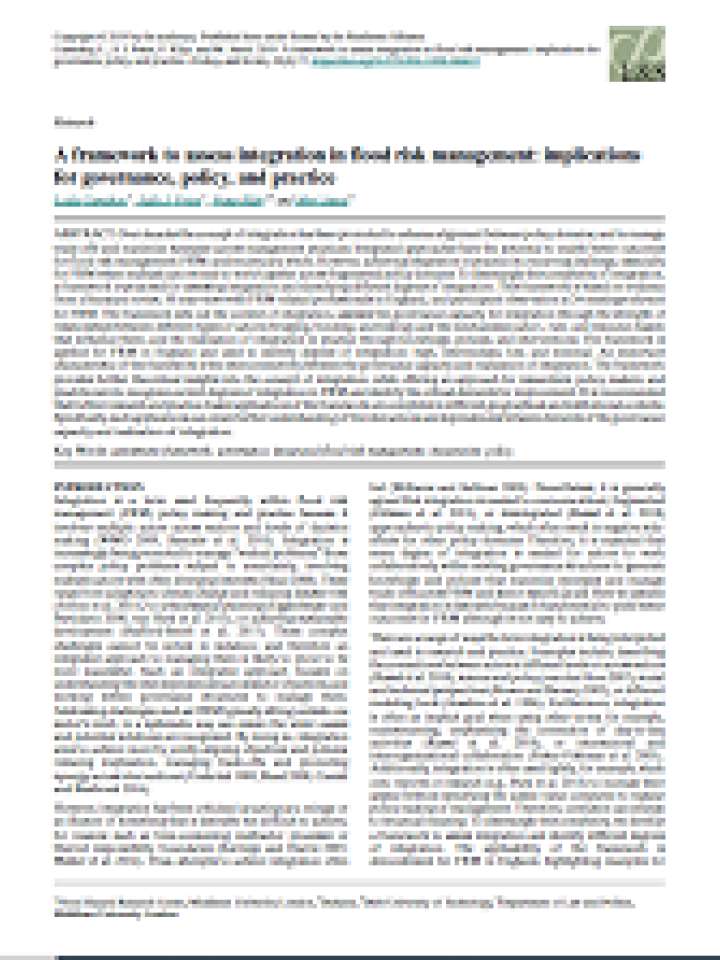A framework to assess integration in flood risk management: implications for governance, policy, and practice
Over decades the concept of integration has been promoted to enhance alignment between policy domains, and to manage trade-offs and maximize synergies across management practices. Integrated approaches have the potential to enable better outcomes for flood risk management and society as a whole. However, achieving integration in practice is a recurring challenge, especially for flood risk management where multiple actors need to work together across fragmented policy domains.
To disentangle this complexity of integration, a framework is proposed for assessing integration and identifying different degrees of integration. This framework is based on evidence from a literature review, 50 interviews with flood risk management-related professionals in England, and participant observation at 24 meetings relevant for flood risk management.
The framework sets out the context of integration, assesses the governance capacity for integration through the strength of relationships between different types of actors (bridging, bonding, and linking) and the mechanisms (actor-, rule- and resource-based) that influence them, and the realization of integration in practice through knowledge, policies, and interventions.
The framework is applied for flood risk management in England and used to identify degrees of integration: high, intermediate, low, and minimal. An important characteristic of the framework is the interconnectivity between the governance capacity and realization of integration. The framework provides further theoretical insights into the concept of integration, while offering an approach for researchers, policy makers, and practitioners to recognize current degrees of integration in flood risk management and identify the critical elements for improvement.
It is recommended that further research and practice-based applications of the framework are completed in different geographical and institutional contexts. Specifically, such applications can create further understanding of the interactions and dependencies between elements of the governance capacity and realization of integration.
Explore further

